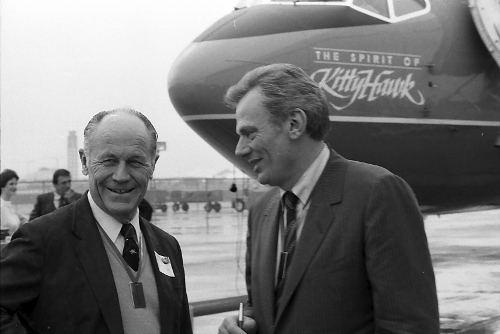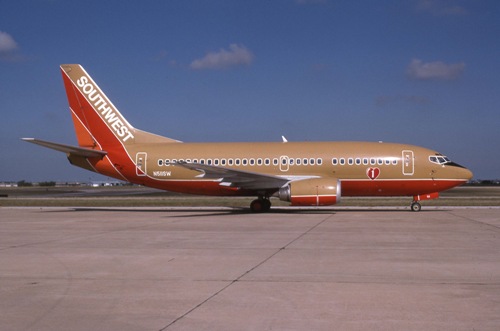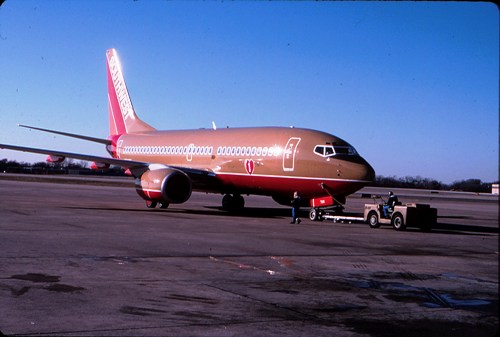- Subscribe to RSS Feed
- Mark as New
- Mark as Read
- Bookmark
- Subscribe
- Printer Friendly Page
- Report Inappropriate Content
Boeing's 737 has allowed Southwest Airlines to fly to greatness, and conversely, Southwest’s longtime support has played a major role in the continued success of the most prolific jetliner in aviation history. Today’s announcement about Southwest assuming the role of launch customer for the new 737 MAX further reinforces that relationship.

Look back to a steamy June morning 40 years ago. Who could have guessed how this relationship would prosper? Southwest began operation with a tiny fleet of three brand-new 737-200s that had been refused by longtime 737 operators PSA and Aloha. The upstart airline was able to finance their purchase thanks to Boeing, and to the best of my memory, this was the first time since the legacy carriers began service in the 1920s and 1930s that a domestic airline had begun service utilizing new, factory-delivered aircraft. The post-war local service airlines and the California intrastate carriers, PSA and Air California, had relied on war surplus and hand-me-downs from the larger airlines.

Southwest’s first batch of standard 737-200s were supplanted by 737-200 Advanced aircraft (shown above) with more powerful (and cleaner) powerplants.

Deregulation in 1978 allowed Southwest to expand beyond the borders of Texas, but it needed an aircraft that would allow it to compete on longer routes from San Antonio and Houston to the West Coast. The larger 737-300, with its more powerful engines, greater range, and greater performance was the perfect airplane. Southwest and US Airways were the launch Customers. Ironically, none of the other airlines showed initial interest as they were happy with the 737-200 for shorter flights and had 727s serving the same markets that would be flown by the 737-300. Without the launch customers’ support, the 737 line might well have ended with the -200. (As an interim measure, Southwest leased six 727-200s from PeopleExpress to serve flights to the West Coast.) The brand new 737-300 made its worldwide airline debut on December 17, 1984. Because this was the anniversary of the Wright Brothers first flight, the aircraft, N300SW, was named The Spirit of Kitty Hawk (above Chuck Yeager with Herb Kelleher). It is now on permanent display at the Frontiers of Flight museum in Dallas.

The 737-300 was the forerunner of the “Classic 737” family that includes the larger 737-400 and the smaller 737-500 (above, courtesy Jon Proctor). Southwest was also the launch airline for the 737-500, with the first aircraft entering worldwide airline service on March 5, 1990. Soon airlines all over the world began flocking to the 737-300 and its kin as they discovered its reliability and economy.

Southwest continued to grow and became a coast-to-coast airline serving all of America in the 1990s. Once again, Southwest stepped forward to take the lead on an aircraft that would take the airline into the new millennium—the Boeing 737-700. This 737 flies higher, farther, and faster than the earlier versions with fewer emissions. Like the -300, the 737-700 is the forerunner of a new range of aircraft that also include the 737-600, 737-800, and 737-900. These aircraft comprise the 737 Next Generation or 737NG. On January 18, 1998, Southwest introduced the 737-700, the first NG aircraft, with service from Dallas to Harlingen, via Houston Hobby (above). N700GS was the landmark aircraft. While most of Southwest’s NG previous orders have been for the -700, the larger 737-800 will enter Southwest service early next year.

Today’s announcement that Southwest will be the launch airline for the new 737 MAX series is another milepost on the 737 road. When it enters service in 2017, this brand new aircraft will offer reduced fuel usage, along with significantly reduced emission levels, and will provide the lowest operating costs among single-aisle aircraft. Not only that, this will be the fourth Boeing aircraft that Southwest has taken a lead role in introducing.
.
You must be a registered user to add a comment. If you've already registered, sign in. Otherwise, register and sign in.